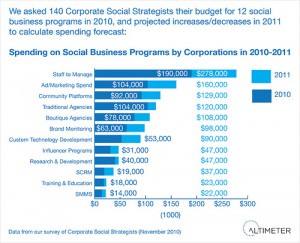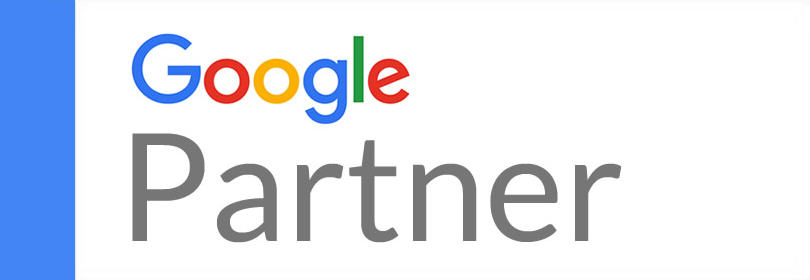In one of my a previous blog posts, 7 Keys to Choosing the Right Social Media Monitoring Tool, I spoke about the importance of listening tools in helping companies find relevant online conversations. This post is all about the engagement platforms or Social Media Management Systems (SMMS).
These are communication platforms where users take action and can respond, engage, interact or communicate directly on social networks, including Twitter, blogs, Facebook, forums, etc…These are real-time, highly customized dashboards and often offer multiple accounts, a shared workspace for many users and the ability to respond in multiple places with one click.
SMMS differ from social media monitoring (SMM) tools in that they are primarily where activity occurs rather where one analyzes activity. Unfortunately, there isn’t a comprehensive solution that incorporates in-depth listening capabilities with a robust engagement platform. Spredfast probably comes closest but its still has a way to go to utilize both.
Here are some key considerations when choosing your SMMS (via Socialtext)
Confidence in Adoption Rate
The phrase “build it and they will come,” usually doesn’t apply to these platforms so make sure your social media team and community managers are willing to embrace the new platform. Thus, don’t force adoption unless you receive approval from the users themselves.
It Fits the Way People Work
Make sure that your SMMS tool can be integrated with e-mil, mobile, SMM tools and other third party sites. Many times your community managers are on the front lines with customers and prospects, thus they need fast access to information and engage people.
Aggregates Sources
SMMS tools need to provide visibility to all staff and advocates involved. A user should be able to search across all the workspaces to which they belong, by key word, page title or tags. People should be able to create links that lead to pages on other workspaces or external sources. People use a variety of information sources to do their job. For example, they may use emails and calendars from Microsoft Outlook or Lotus Notes, lead records from Salesforce.com, documents stored on their computer, or in a system like SharePoint.
Low Cost of Ownership
Every software application requires human labor to administer and support it. The cost of the people services can be the most significant cost in the total cost of ownership calculation. According to Gartner, the cost of the people services to own and manage a licensed software application can be 4X the cost of the software license per year. Make sure your SMMS solution is simple as well as effective.
Below is a list compiled by the Altimeter Group sorted by alphabetized order by parent company, not in priority or capability. I added a few that were missing but please feel free to add.
- Argyle Social: Provides features to publish and schedule, manage a social inbox, measuring tools, and white label solutions.
- Awareness Networks, Social Marketing Hub an enterprise class community platform has launched their own tool that has Facebook, YouTube, Flickr, Twitter, and of course connect with their own community features. In particular, this is an existing enterprise class vendor (previously I’ve published thorough research report on them) which bodes well to their level of potential levels of service, support, and market viability. (they’ve briefed me)
- Buddy Media: Has a set of management tools that help brands with Facebook, Twitter, and monitoring and reporting. You’ll find iterations for both brands and agencies. They have case studies from large brands and media on their site.
- Constant Contact: Purchased Nutshell Mail which has keyword monitoring systems that can empower small business owners to receive alerts about their social networking accounts. On Feb 28th they acquired SCRM company Bantam Live which has some SMMS features, for sales and marketers. (hat tip to Dan Ziman)
- Context Optional offers management tools for moderating Facebook pages
- Conversocial: Offers solutions to help managers to plan updates and learn what type of content resonates the most with your fans and followers in social networks like Facebook and Twitter
- CoTweet was recently acquired by ExactTarget. They provide Twitter integration tools, scheduling, workflow, listening tools, multiple author management, and management dashboard tools
- Distributed Engagement Channel by DEC Their system offers the ability to publish content, moderate UGC submissions, and track and optimize channel performance. They also have features such as ID integration, media handling, and reporting.
- Engage Sciences: Allows marketers to launch social promotions to engage customers on Facebook, Twitter, LinkedIn and corporate websites, whilst aggregating, filtering and storing streams from across the social web to allow companies to easily showcase the voices of advocates.
- Expion Expion allows large Enterprises to publish and aggregate social media conversations that can scale to hundreds of local based Facebook pages, Twitter accounts, and YouTube channels, etc. The tool has the ability to listen, publish, manage, respond, govern, and glean intelligence across these channels.
- Hootsuite Integrates Facebook and LinkedIn accounts. Whereas before you could update Facebook and LinkedIn through Ping.fm functionality, things are different now. Facebook and LinkedIn accounts are treated similarly to Twitter accounts: you can create columns from these social networks, read your friends’ status updates, and update multiple Facebook accounts. Facebook integration offers in-line commenting.
- MediaFunnel offers integration with Facebook and Twitter. They have several permission based workflows that include a variety of roles such as a contributor, administrators, publishers. This is not unlike traditional editorial processes used in CMS systems.
- Moderation Marketplace Provides Social Media Management and Content Aggregation solution designed to be delivered to your clients under your brand.
- Mutual Mind offers brand monitoring, permission based workflow as well as reporting tools.
- Objective Marketer provides managers ability to structure their messages by campaigns, features include User Management with roles and permissions and workflows, scheduled content, integration, analytics and reporting. The tell me their current client makeup is 60% Enterprises, 30% Agencies and 10% Bloggers / Independent Consultants. (in Jan 2011, Objective Marketer was acquired by Email Vision)
- Postling allows for individual clients or brand to manage assets like blog, Facebook Fan Page, Twitter account, and Flickr accounts from a single management system. There is also comment aggregation as well as workflow between teams.
- Seesmic. Seesmic offers support for multiple Twitter, Facebook, Linkedin, Ping.fm, Foursquare and Google Buzz accounts. Also offered on iPhone, Android wp7 and Blackberry. Languages translation support includes: English, Chinese, French, German, Japanese, Portuguese, Romanian, Spanish and more. Seesmic has received investments from Salesforce and has an integrated offering with Chatter.
- Shoutlet offers a multi-user application that helps global brands, small businesses, and marketing agencies build, engage, and measure all of their social media marketing communication via one platform.
- SocialVolt Provides STUDIO which is a complete social media management platform that integrates all the tools a company needs to successfully engage with their clients on the social web.
- SpredFast is an up and comer who recently briefed me, this Austin based company offers the core features and claims to have a 40% enterprise customer base. They have partners with Convio, Radian6, Crimson Hexagon, Sysomos, Trackkr, IBM, Porter Novelli, Sierra Club, HomeAway. They position their product as collaborative campaign management and offer features such as scheduling content, features that integrate with events and social stream like features similar to Friendfeed. (they’ve briefed me)
- Sprinklr offers social media management tools, it’s interesting their website has a strong focus on listening first, before the publication.
- SproutSocial is a recent low cost SMMS tool that is great for non-profits and small businesses.
- Strongmail, a traditional email marketing platform offers platform that tracks the multi-stage sharing activity of the campaign all the way to conversion, analysis on reach, sharing activity, CT’s, feedback on Facebook fan page wall posts.
- Syncapse (formerly SocialTalk) provides integration with Twitter, Facebook, WordPress and MoveableType, this management tool provides governance, workflow, scheduling and other features.
- Vitrue: Offers social media management systems, that has integration with Facebook and Twitter, they offer scheduling features, and the ability to link multiple Facebook pages together.
- Wildfire: Offers features for social sweepstakes that promote word of mouth as well as ability to manage and publish from their platform to multiple social networks, with analytics.
For an interesting take on how these companies are trying to differentiate themselves read: Social Media Management System (SMMS) Lack Differentiation in Positioning, Confusing Market.




